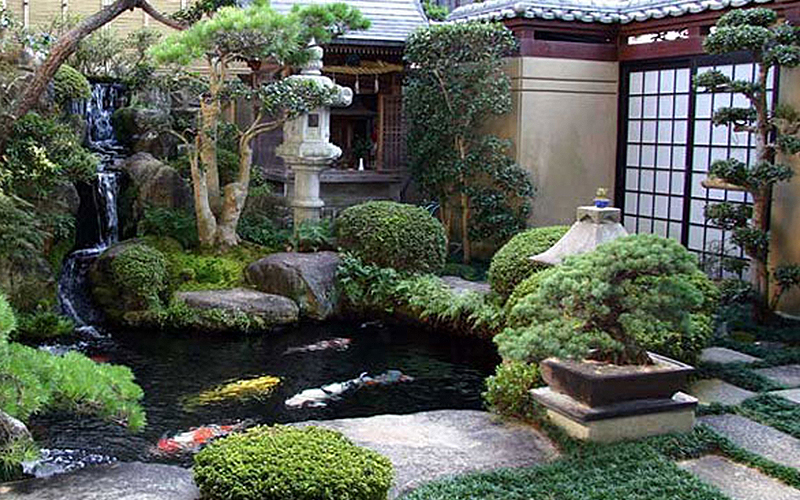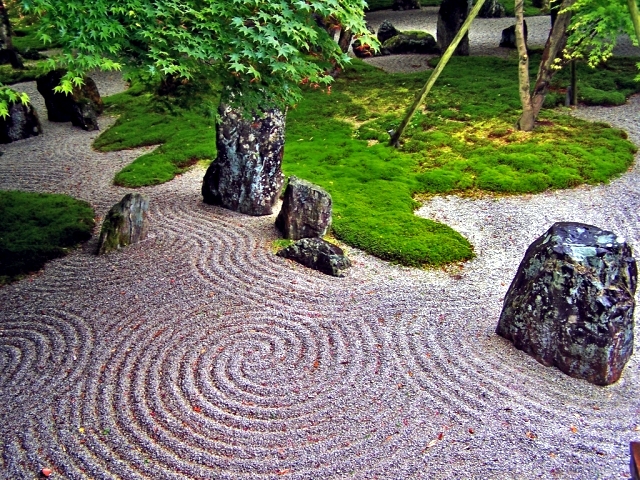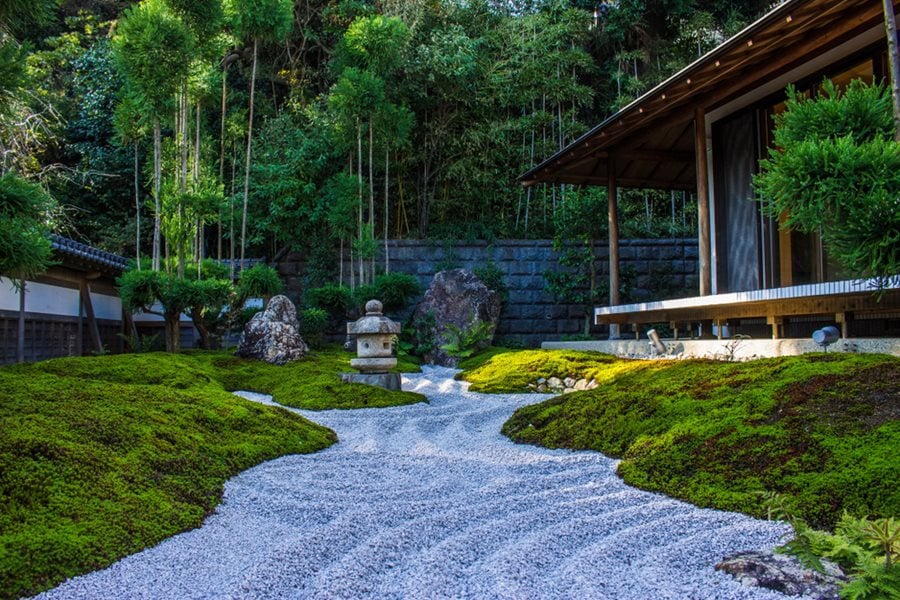

Finally, you will also need to secure the garden or yard in some way so that no one can enter it. If you want to have a more modern look at the garden, then pre-manufactured logs can be used and light sconce lighting accents that can also bring some color to your garden or yard. If you are ready for a more natural look, stones, wood mulch, rocks, and pebbles are needed.

You should also provide pots, planters, and containers with gravel and small rocks in them to your Japanese Garden or Backyard. You will also need a piece of stone or another material to use as the base for your water feature. Incandescent bulbs in varying forms can be used, but if you prefer to have some lights that add warmth to your Backyard or space, then adding low voltage lighting may be the way to go. Lighting can be added that will accentuate some of your favorite plants in the Garden or Backyard. Adding a small wooden bridge over the stream is also a good idea to make the garden look more like a traditional Japanese garden. Additional materials include plain and gravel stones, pebbles, bamboo, shrubbery, and others. Rotating your stepping stones now and then will keep your Backyard interesting, especially if you have a limited number of them. First, you should research which rocks will work best for your garden since some stones simply won’t look good in certain places in the Backyard or yard. They can be used for retaining walls, large stepping stones, and even for the water feature areas within your Japanese Garden or Backyard. Rocks of various shapes and sizes are also part of the list. Wood mulch to make the yard look natural and warm. These are usually used in small amounts to give a natural feel to the garden and its overall environment. Whether your garden or backyard is secluded, regular, or as large as that in Lou

Other materials such as seaweed or wood mulch will make your space look more natural and unique, in addition to adding warmth to the environment. You should also have pre-installed planters to accommodate your smaller pots of flowers.

Preplanter stones that fit each other in a variety of sizes work well. It is recommended to use a stone for the main element where the water from the planter will fall and flow on. You should not be placed at the center of your garden. It can be either from a small pond or from a stream running through bamboos. What is the focal point?Īnswer: The focal point of a Japanese Garden is usually the water element. Also, for a Japanese garden is possible to use non-fussy grasses such as baby blue eyes or cornflower varieties. Which kind of plants is suitable for a Japanese Garden?Īnswer:For a Japanese Garden, you can use any herbaceous plants such as primrose, poppies, pansies, snowdrops, forget-me-nots, or narcissus varieties. Be mindful of the aspects that you would want accentuating.Īdditional materials such as stones, gravel, stepping stones, split logs, and other retaining wall materials are also important in the Japanese-style Garden or Backyard. Other plants to include in your design would be a handful of bamboo, irises, and magnolias.ĭifferent plants and trees in the Japanese Garden are highlighted for various purposes, such as to provide color, privacy, interest, and flowers. The plants in a Japanese-style garden are typically evergreen trees, such as Tsuga (cedar), Zelkova, and Japanese cypress. What are the plants to useĪnswer:The Japanese Garden style is often associated with ponds and streams that you can surround with gravel, river stones, boulders, or even stone flags. However, before that, here we are presenting you relevant concerns that you probably need to know before taking an idea featured in the list. We have compiled 10 Japanese Garden style ideas for your Backyard, which will help inspire you and give you some ideas on making over the garden. The key is to add some flair and inspiration from the outside world. The Japanese Garden is an excellent example of how the right choice of plants and a little creativity can turn your garden into a tranquil space that you’ll be able to enjoy every day.


 0 kommentar(er)
0 kommentar(er)
